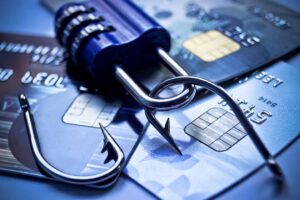Depending on who you are, the first rule of the Bank Secrecy Act is “don’t talk about the Bank Secrecy Act.” Secrecy is a key feature of the law’s requirement to submit Suspicious Activity Reports in certain cases. In fact, it is a federal crime to disclose to anyone that said report was filed. Why? Any tip-off to individuals or organizations thus scrutinized interferes with the Bank Secrecy Act’s hopes to weed out money laundering, terrorism, bribery, and other financial crimes.
Professionals from a wide range of financial industries populate and submit SARs online. That’s because broker-dealers, money transfer agents, banks, and many more are included in those subject to the Bank Secrecy Act. These personnel may file SARs of their own accord or in response to an investigative demand in the form of a National Security Letter, in which case their SAR must be careful not to reference the NSL’s existence. SAR details might relate to employees at a financial institution, individual retail customers, or larger commercial clients. As long as certain dollar amounts have come into play or seem to indicate a strange deviation from expected patterns, the SAR can be generated. Filings on customers might rightly put financial industry personnel at risk of retaliatory litigation. To address this, a safe harbor exists to protect the individuals involved. Let’s explore what the safe harbor means for the Bank Secrecy Act.
What is the safe harbor provision in the Bank Secrecy Act?
Dollar amounts vary. The spirit of the law seems to be the salient point. Depending on the industry, as little as a few thousand dollars sent can constitute a reportable event. Money transfer, currency exchange, and businesses that deal in money orders and traveler’s checks must report suspicious transactions of as little as $2,000, for example. Banks have different dollar amount thresholds but are encouraged to file a SAR even if the dollar amounts are not met but suspicion is present.
The safe harbor provisions say that no one involved in submitting a SAR can face any civil liability due to proffering a SAR. That’s true whether or not it leads to a thwarted attempt to launder money, finance terrorism, or the capture of bad actors on either end of those transaction types. Though some industries, such as banks, often review SARs at multiple levels, their names need not be included in the final product, and the bank must maintain secure storage of the document for up to five years.
Purpose of the Safe Harbor Provision
Complete immunity from civil liability by anyone who tenders a SAR can encourage filing. The safe harbor provision is meant, according to The Financial Crimes Enforcement Network, or FinCEN, to “[shed] more light upon overall financial trails, especially if they are complex and appear to be layered amongst numerous financial institutions, entities, and Jurisdictions.” The information gained from SARs helps build a full picture of illicit financial activities and is used to “[alert] other participating financial institutions” of customers who may be acting in bad faith.
How the Safe Harbor Provision Works
The safe harbor provision works by allowing SARs to be kept strictly confidential. Though SARs require an outline of facts related to when and where the suspicious activity took place, should the report find its way into a legal process, it and all supporting reports and transaction specifics should be shielded from discovery. Some argue that any items supporting the substantiation of a SAR turned over during discovery could help plaintiffs deduce whether a SAR had been filed at all. In one case, individuals sued a bank for a wrongful accusation of illegal activity, and the supporting documents came into question. FinCEN asserted that not all documents filed in support of a SAR implied its existence.
Impact of the Safe Harbor Provision
Critics have strongly opposed the requirements of the Bank Secrecy Act as intrusive, but the safe harbor provisions do ostensibly encourage the disclosure to the federal government of bank details that might be related to financial crimes. In either case, reports point to an increase in SARs submitted overall for the past five years and “defensive” SARs turned in to minimize risk to a company for not filing. Other impressive statistics from Thomson Reuters say 3.6 million SARs were submitted in 2022, and 2.3 million queries were made into the data by law enforcement.
As we have seen, the Bank Secrecy Act has wide-ranging repercussions for financial industries up to and including cryptocurrency. The cryptocurrency exchange Binance paid $4.3 billion in part because it did not satisfactorily set up anti-money-laundering controls and violated the Bank Secrecy Act. To learn more about the BSA, the long arm of the law, why these policies are in place, and how to comply with them, explore the BankersHub BSA AML Professional Certification.







